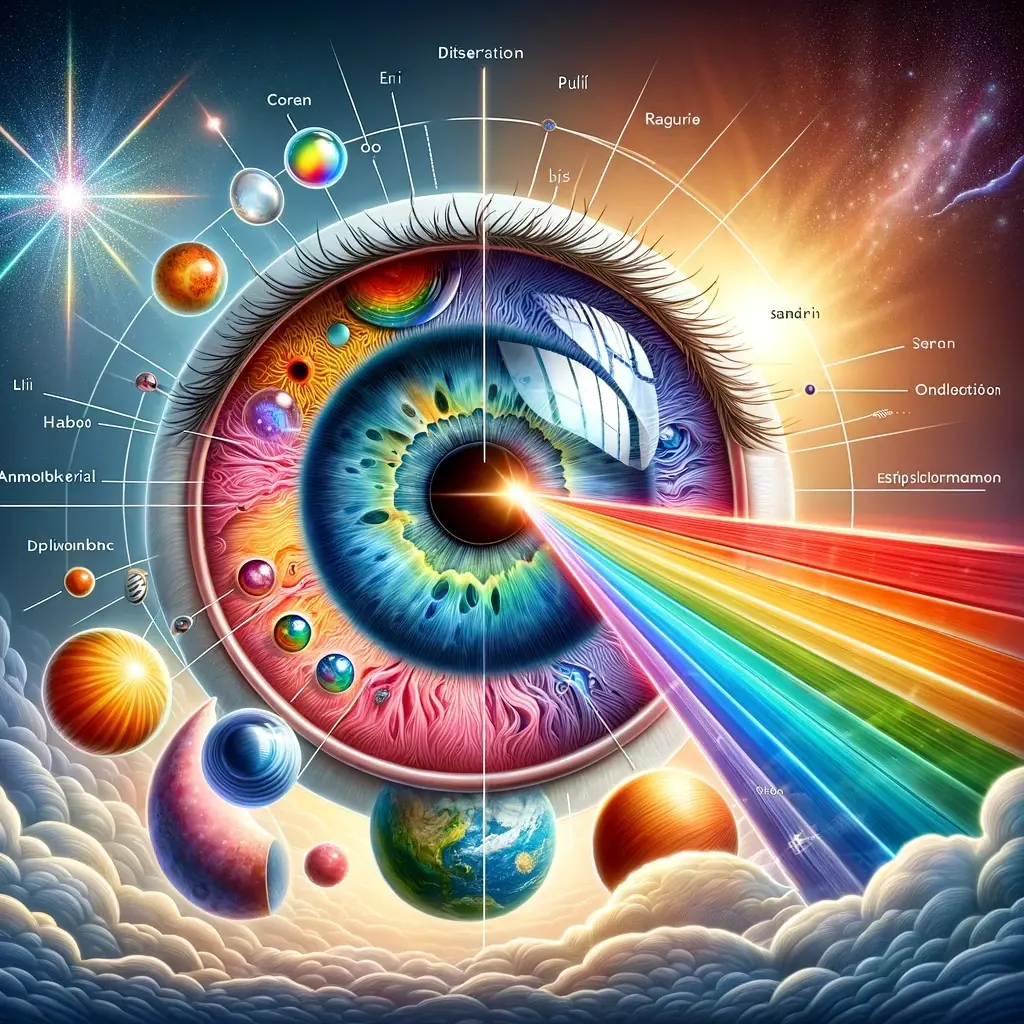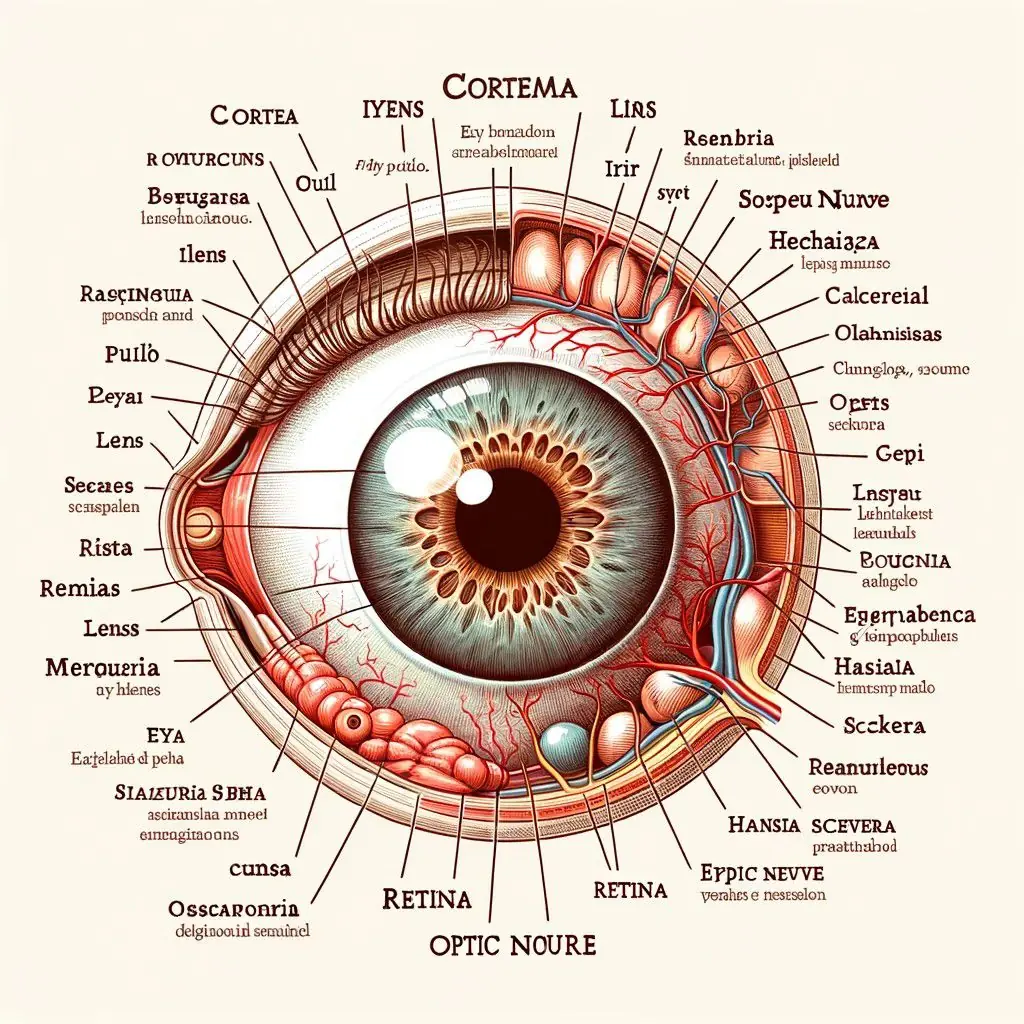
Master Class 10 Science: In-Depth Guide to ‘The Human Eye and the Colorful World’ – Vision Mechanics, Light Refraction, and Atmospheric Effects Explained with Q&A | NCERT

Introduction
The human eye is an extraordinary organ capable of perceiving a world full of colors, shapes, and movements. In this chapter, we delve into the intricate details of the human eye, explore common vision defects and their corrections, and unravel the fascinating phenomena of light refraction and dispersion. We will also understand how atmospheric conditions affect light and lead to some of the most mesmerizing natural spectacles.
The Human Eye: A Window to the World

The human eye functions much like a camera. Its main parts include the cornea, iris, pupil, lens, and retina. Light enters through the cornea, passes through the pupil (whose size is regulated by the iris), and is focused by the lens onto the retina. The retina, with its photoreceptor cells (rods and cones), converts light into electrical signals sent to the brain via the optic nerve.
Vision Defects and Their Corrections
Common vision defects include myopia (nearsightedness), hypermetropia (farsightedness), and presbyopia (age-related reduced ability to focus on nearby objects). These defects usually arise from variations in eyeball length or irregularities in the cornea or lens. Glasses or contact lenses correct these by altering the direction of incoming light, while surgical options like LASIK can also provide long-term solutions.
Refraction of Light Through a Prism
A prism, typically a triangular glass piece, refracts or bends the path of light. When white light passes through a prism, it bends at different angles depending on the wavelength, leading to a spectrum of colors. This phenomenon is known as dispersion.
Dispersion of White Light by a Glass Prism
Dispersion occurs because different colors in white light (like red, orange, yellow, green, blue, indigo, and violet) have different wavelengths. Red light bends the least, while violet bends the most. This separation of colors is what creates a spectrum.
Atmospheric Refraction
Atmospheric refraction occurs due to the bending of light as it passes through the Earth’s atmosphere, which has varying density layers. This phenomenon is responsible for the apparent shifting of the position of stars, the beautiful spectacle of the sunrise and sunset appearing before the Sun crosses the horizon, and the twinkling of stars.
Scattering of Light
Scattering occurs when light rays are deflected in various directions by particles in the atmosphere. Shorter wavelengths (like blue and violet) are scattered more easily, which is why the sky appears blue. During sunrise and sunset, the light has to travel through more of the atmosphere, scattering short wavelengths and allowing longer wavelengths (like red and orange) to dominate, creating the colors of the dawn and dusk.
Conclusion
The interplay of light with our eyes and the environment is a splendid display of nature’s magic. Understanding these principles not only enriches our appreciation of the natural world but also underscores the importance of maintaining eye health and the wonders of optical science. This knowledge, forming the foundation of our perception, opens a doorway to the colorful and vivid experiences of life.
Historical Context: The Evolution of Optical Science Isaac Newton and the Spectrum section dedicated to Isaac Newton’s groundbreaking work with prisms and light. It includes illustrations of his experiments and explains how he discovered the spectrum of white light.The Development of Optical Instruments This part covers the evolution of important optical instruments like telescopes and microscopes, highlighting key historical milestones and their impact on scientific discovery.Understanding Vision Through Historian overview of how our understanding of vision and light has evolved over time. This section traces theories from ancient civilizations to modern scientific understandings, providing historical context to the study of light and vision.Environmental Connection: Light, Vision, and Our World Light in Ecosystem This segment explains the crucial role of natural light in ecosystems, particularly focusing on photosynthesis in plants. It includes diagrams showing how sunlight is converted into energy by plants, underlining the importance of light in sustaining life.Digital Eye Strain in the Modern World Addressing a contemporary issue, this part discusses the increasing prevalence of digital eye strain. It offers practical tips on how to maintain eye health in a digital age, including exercises and best practices for screen usage.The Impact of Light Pollution An insightful section on light pollution, discussing its effects on wildlife and human health. It includes suggestions for reducing light pollution and its importance for maintaining natural circadian rhythms in humans and animals.
Questions and Answers on “The Human Eye and the Colorful World”
1. Q: What is the main function of the human eye?
A: The main function of the human eye is to perceive light and convert it into electro-chemical impulses in neurons.
2. Q: Name the transparent front part of the eye.
A: The cornea.
3. Q: What is the role of the iris in the eye?
A: The iris adjusts the size of the pupil to control the amount of light entering the eye.
4. Q: What is myopia and how is it corrected?
A: Myopia, or nearsightedness, is when distant objects appear blurry. It’s corrected with concave lenses.
5. Q: What causes hypermetropia and its correction?
A: Hypermetropia, or farsightedness, is caused by a short eyeball. It’s corrected with convex lenses.
6. Q: How does a prism disperse white light?
A: A prism disperses white light by bending different wavelengths at different angles, creating a spectrum.
7. Q: Why does the sky appear blue?
A: The sky appears blue due to the scattering of shorter blue wavelengths of light by atmospheric molecules.
8. Q: What is the phenomenon behind the twinkling of stars?
A: The twinkling of stars is caused by atmospheric refraction that makes starlight bend and scatter.
9. Q: What is the function of the retina in the eye?
A: The retina contains photoreceptor cells that convert light into electrical signals.
10. Q: What is presbyopia?
A: Presbyopia is the age-related reduction in the eye's ability to focus on nearby objects.
11. Q: Describe the role of the lens in the human eye.
A: The lens focuses light onto the retina to form clear images.
12. Q: What is atmospheric refraction?
A: Atmospheric refraction is the bending of light as it passes through different layers of the atmosphere.
13. Q: How are rainbows formed?
A: Rainbows are formed by the refraction, dispersion, and reflection of sunlight in water droplets.
14. Q: Why do stars appear higher than they actually are?
A: Stars appear higher due to atmospheric refraction bending the light downwards towards the viewer.
15. Q: What causes red sunsets and sunrises?
A: Red sunsets and sunrises are caused by the scattering of shorter wavelengths and the predominance of longer red wavelengths.
16. Q: How does the pupil help in vision?
A: The pupil regulates the amount of light that enters the eye, aiding in clear vision under different light conditions.
17. Q: What are rods and cones in the retina?
A: Rods and cones are photoreceptor cells in the retina; rods detect light intensity, while cones detect colors.
18. Q: Explain the term ‘blind spot’ in the eye.
A: The blind spot is an area on the retina without photoreceptors, where the optic nerve exits the eye, leading to a lack of vision.
19. Q: What is the role of the optic nerve?
A: The optic nerve transmits visual information from the retina to the brain.
20. Q: Why does light bend when passing through a prism?
A: Light bends when passing through a prism due to the change in speed as it moves from air to glass, a phenomenon known as refraction.
21. Q: What is the cause of the ‘mirage’ effect?
A: Mirage is caused by the refraction of light due to temperature gradients in the air, creating the illusion of water on the ground.